 Search by Keyword
|
"WHY DON'T WE DO IT IN THE ROAD?"
(John Lennon – Paul McCartney)
Love it or hate it, celebrate it or be embarrassed by it, "Why Don't We Do It In The Road?" has become one of the most talked about tracks on The Beatles "White Album." As ballsy as it was to release a song like this in the climate of late 1968, it is a hidden gem that still surprises the casual Beatles fan today when first discovered. Later generations of fans then come to realize that the "fab four" were much more than 'peace, love and flowers.'
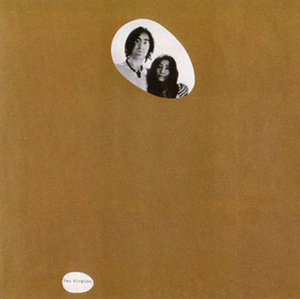 It wasn't really all that surprising for The Beatles to release this song at the time anyway. In fact, something of the sort was probably expected, particularly on an album with a plain white cover, as if something subversive was inside. After all the furor caused by John's “more popular than Jesus” statement, and the songs banned by the BBC because of drug references (intentional and/or imagined), and John and Yoko's full frontal nudity on the cover of their newly released “Two Virgins” album, why not just compose a song about the most taboo subject imaginable and see how many feathers could be ruffled? It wasn't really all that surprising for The Beatles to release this song at the time anyway. In fact, something of the sort was probably expected, particularly on an album with a plain white cover, as if something subversive was inside. After all the furor caused by John's “more popular than Jesus” statement, and the songs banned by the BBC because of drug references (intentional and/or imagined), and John and Yoko's full frontal nudity on the cover of their newly released “Two Virgins” album, why not just compose a song about the most taboo subject imaginable and see how many feathers could be ruffled?
Songwriting History
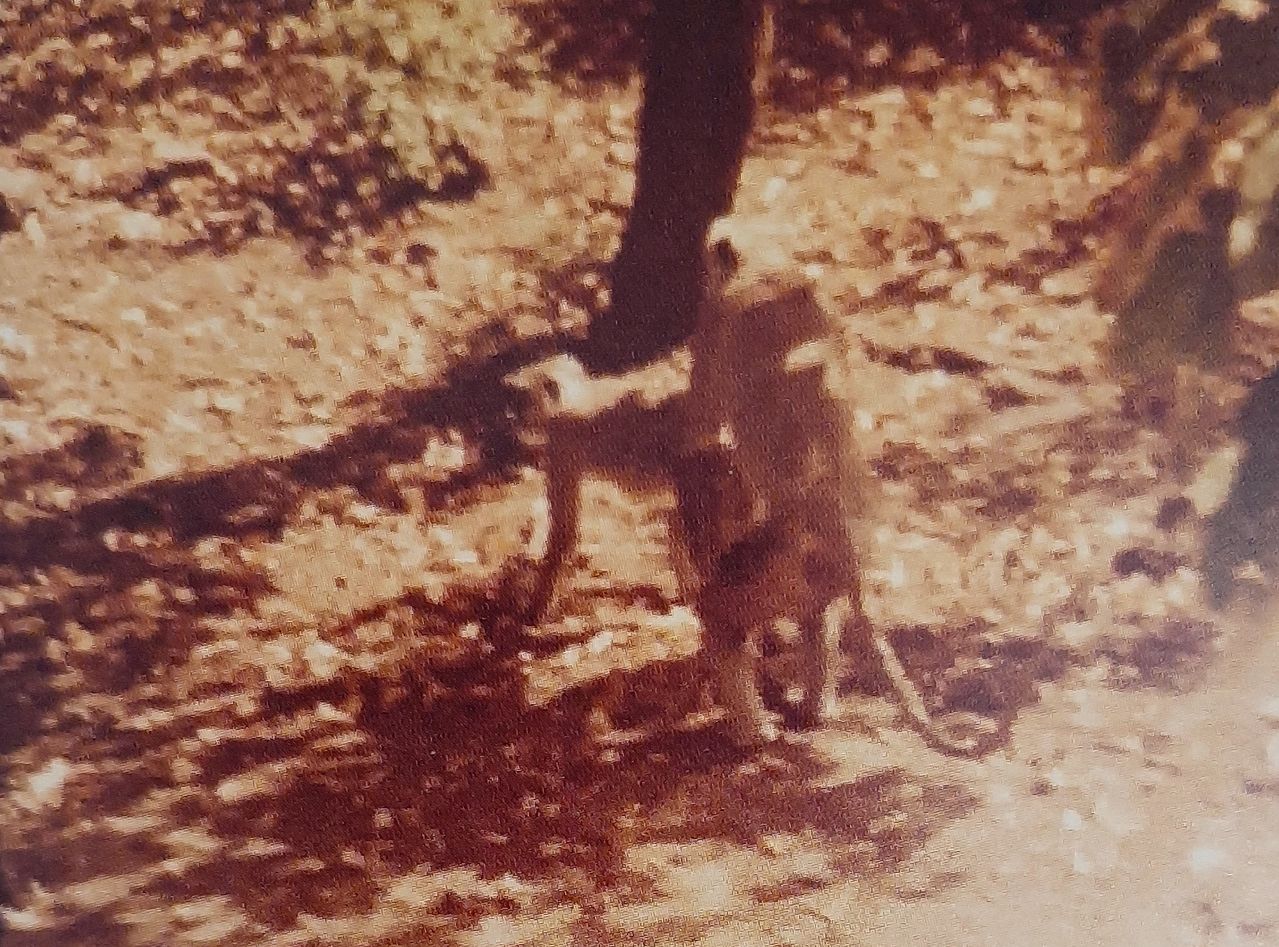 "The idea behind 'Why Don't We Do It In The Road' came from something I'd seen in Rishikesh," Paul explains in his book "Many Years From Now" referring to The Beatles' visit to India in the spring of 1968 to study and practice Transcendental Meditation with the Maharishi. Paul continues: "I was up on the flat roof meditating and I'd seen a troupe of monkeys walking along in the jungle and a male just hopped on to the back of this female and gave her one, as they say in the vernacular. Within two or three seconds he hopped off again, and looked around as if to say, 'It wasn't me,' and she looked around as if there had been some mild disturbance but thought, 'Huh, I must have imagined it,' and she wandered off." Photographic evidence of this event, as seen here, is included in Paul's book "The Lyrics." "The idea behind 'Why Don't We Do It In The Road' came from something I'd seen in Rishikesh," Paul explains in his book "Many Years From Now" referring to The Beatles' visit to India in the spring of 1968 to study and practice Transcendental Meditation with the Maharishi. Paul continues: "I was up on the flat roof meditating and I'd seen a troupe of monkeys walking along in the jungle and a male just hopped on to the back of this female and gave her one, as they say in the vernacular. Within two or three seconds he hopped off again, and looked around as if to say, 'It wasn't me,' and she looked around as if there had been some mild disturbance but thought, 'Huh, I must have imagined it,' and she wandered off." Photographic evidence of this event, as seen here, is included in Paul's book "The Lyrics."
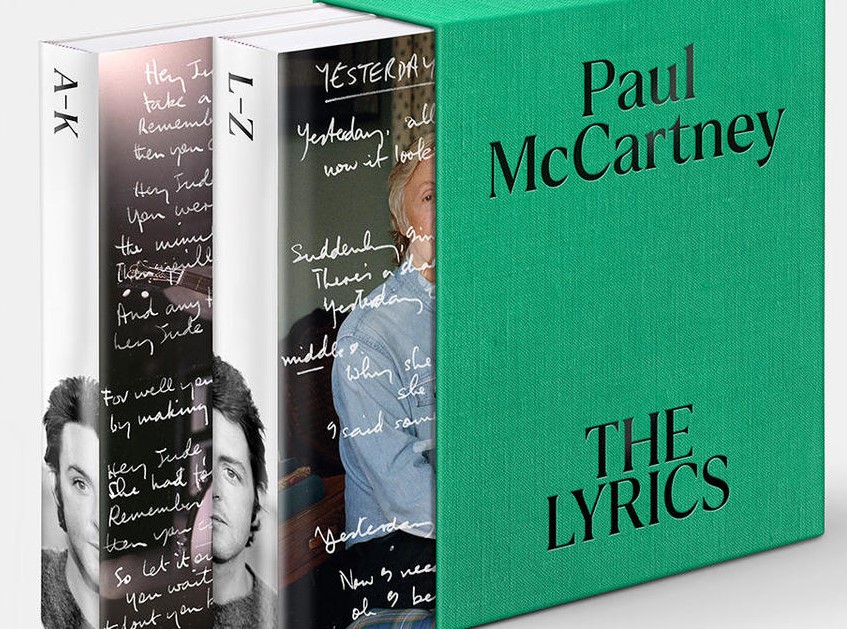 "And I thought, 'Bloody hell, that puts it all into a cocked hat.' That's how simple the act of procreation is, this bloody monkey just hopping on and hopping off. There is an urge, they do it, and it's done with. And it's that simple. We have horrendous problems with it, and yet animals don't. So that was basically it. 'Why Don't We Do It In The Road' could have applied to either f*cking or sh*tting, to put it roughly. Why don't we do either of them in the road? Well, the answer is we're civilized and we don't. But the song was just to pose that question. 'Why Don't We Do It In The Road' was a primitive statement to do with sex or to do with freedom really. I like it, it's just so outrageous that I like it.” "And I thought, 'Bloody hell, that puts it all into a cocked hat.' That's how simple the act of procreation is, this bloody monkey just hopping on and hopping off. There is an urge, they do it, and it's done with. And it's that simple. We have horrendous problems with it, and yet animals don't. So that was basically it. 'Why Don't We Do It In The Road' could have applied to either f*cking or sh*tting, to put it roughly. Why don't we do either of them in the road? Well, the answer is we're civilized and we don't. But the song was just to pose that question. 'Why Don't We Do It In The Road' was a primitive statement to do with sex or to do with freedom really. I like it, it's just so outrageous that I like it.”
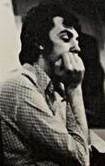 Concerning comments from some that he was jumping on the "sex and drugs" bandwagon of the late '60s, Paul continues: “The spirit of the times meant that a lot of us were thinking similar things, just doing it in different ways.” Back in 1968, Paul also counters, “I never usually write a song and think: 'Right, now this is going to be about something specific.' It's just that the words happen. I never try to make any serious social point. Just words to go with the music. And you can read anything you like into it.” Concerning comments from some that he was jumping on the "sex and drugs" bandwagon of the late '60s, Paul continues: “The spirit of the times meant that a lot of us were thinking similar things, just doing it in different ways.” Back in 1968, Paul also counters, “I never usually write a song and think: 'Right, now this is going to be about something specific.' It's just that the words happen. I never try to make any serious social point. Just words to go with the music. And you can read anything you like into it.”
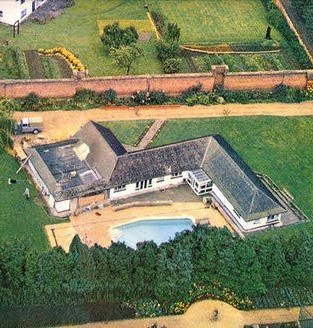 The song appears to have been an idea of Paul's that was put to a 12-bar blues melody and stashed away in the back of his mind, not being considered a serious attempt at writing a song. This is evidenced by Paul not even recording a demo of the song at George's "Kinfauns" home in Surrey when The Beatles were putting to tape songs they had written in India in preparation for them going into the studio to record what became the "White Album." The song appears to have been an idea of Paul's that was put to a 12-bar blues melody and stashed away in the back of his mind, not being considered a serious attempt at writing a song. This is evidenced by Paul not even recording a demo of the song at George's "Kinfauns" home in Surrey when The Beatles were putting to tape songs they had written in India in preparation for them going into the studio to record what became the "White Album."
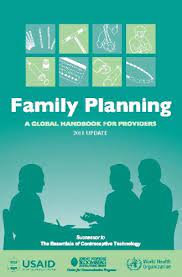 In his book "The Lyrics," Paul describes the contents of a booklet he received from the Family Planning Association when he and Linda were having Mary, their first baby together. "The booklet explained everything. It explained my obsession with girls in their summer clothing, and how I couldn't not look at them. How I had that primeval urge to lay everything in sight. Now I understood that one of the first impulses of this new organism is to replicate itself. So, the feel of this song is a little more outspoken - a little more in your face - than I would normally be. But that's because of the primeval urge it's expressing. And that's one of the great strengths of rock and roll. It can be raw, raw, raw. It's very simple - crude even - and it connects to something deep inside us. Maybe even to the nervous system more broadly." In his book "The Lyrics," Paul describes the contents of a booklet he received from the Family Planning Association when he and Linda were having Mary, their first baby together. "The booklet explained everything. It explained my obsession with girls in their summer clothing, and how I couldn't not look at them. How I had that primeval urge to lay everything in sight. Now I understood that one of the first impulses of this new organism is to replicate itself. So, the feel of this song is a little more outspoken - a little more in your face - than I would normally be. But that's because of the primeval urge it's expressing. And that's one of the great strengths of rock and roll. It can be raw, raw, raw. It's very simple - crude even - and it connects to something deep inside us. Maybe even to the nervous system more broadly."
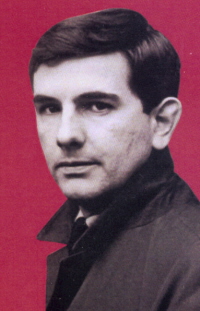 The structure, feel and delivery of the song could easily have been attributed, as indeed it was by many, to the rough rocker John Lennon, although John set the record straight in his Playboy interview of 1980, saying: “That's Paul.” The continual songwriting rivalry between the two composers did come into play for the writing of this song however, Paul describing the composition to author Hunter Davies as “a ricochet off John” and “a very John song.” The structure, feel and delivery of the song could easily have been attributed, as indeed it was by many, to the rough rocker John Lennon, although John set the record straight in his Playboy interview of 1980, saying: “That's Paul.” The continual songwriting rivalry between the two composers did come into play for the writing of this song however, Paul describing the composition to author Hunter Davies as “a ricochet off John” and “a very John song.”
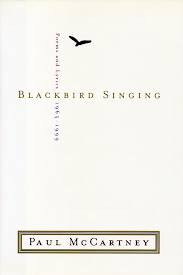 Some sources have claimed that the song had more verses than those which appear on the released recording, these consisting only of the song's title repeated five times per verse along with the line “no one will be watching us” thrown in toward the end of each of the three verses. Legitimate alternate verses seem unlikely since, if they were written, why wouldn't Paul have sung them? This argument appears to have been settled with the release of Paul's book “Blackbird Singing: Poems and Lyrics 1965 – 1999,” which was first released in 2001. Paul thought, undoubtedly as a lark, to include “Why Don't We Do It In The Road?” as an example of his best work in this highly acclaimed book. No extra verses are included here; only three repetitious verses as heard on the record. Some sources have claimed that the song had more verses than those which appear on the released recording, these consisting only of the song's title repeated five times per verse along with the line “no one will be watching us” thrown in toward the end of each of the three verses. Legitimate alternate verses seem unlikely since, if they were written, why wouldn't Paul have sung them? This argument appears to have been settled with the release of Paul's book “Blackbird Singing: Poems and Lyrics 1965 – 1999,” which was first released in 2001. Paul thought, undoubtedly as a lark, to include “Why Don't We Do It In The Road?” as an example of his best work in this highly acclaimed book. No extra verses are included here; only three repetitious verses as heard on the record.
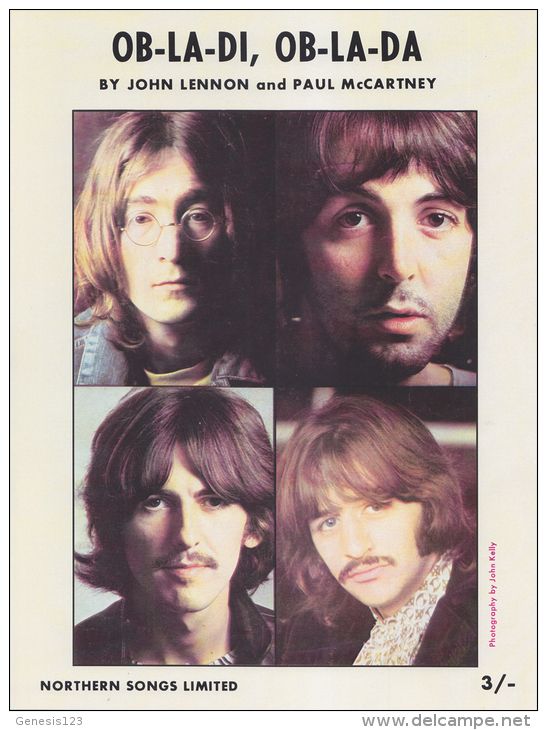 When asked about the song just after the release of the “White Album,” Paul gave a general answer explaining why his compositions cover such a wide variety of genres: “We've always been a rock'n'roll group. It's just that we're not just completely rock'n'roll. That's why we do 'Ob-La-Di, Ob-La-Da' one minute and this the next. When we played in Hamburg, we didn't just play rock'n'roll all evening, because we had these fat old men, businessmen, coming in, and thin old businessmen as well, coming in and saying, 'Play us a mambo or a rumba,' or something. So we had to get into this kind of stuff. We just haven't got one bag, you know, in The Beatles. On one hand you'll get 'I Will,' which is pretty smoochy stuff, and then you'll get 'Why Don't We Do It In The Road?' It's me feeling both of them, the same fellow, and I write both of them.” When asked about the song just after the release of the “White Album,” Paul gave a general answer explaining why his compositions cover such a wide variety of genres: “We've always been a rock'n'roll group. It's just that we're not just completely rock'n'roll. That's why we do 'Ob-La-Di, Ob-La-Da' one minute and this the next. When we played in Hamburg, we didn't just play rock'n'roll all evening, because we had these fat old men, businessmen, coming in, and thin old businessmen as well, coming in and saying, 'Play us a mambo or a rumba,' or something. So we had to get into this kind of stuff. We just haven't got one bag, you know, in The Beatles. On one hand you'll get 'I Will,' which is pretty smoochy stuff, and then you'll get 'Why Don't We Do It In The Road?' It's me feeling both of them, the same fellow, and I write both of them.”
Recording History
 By October 9th, 1968, after well over four months in the studio recording the "White Album," they surely had enough material to fill all four sides of what became their first and only double-album of brand new compositions. As things were winding down in the creation of the album on this day, however, Paul thought to extricate himself from some mixing and minor overdubbing in EMI Studio Two so as to create yet another track to be considered for inclusion on the album. You know, just to make sure they had enough songs. In fact, if you include the two previously recorded tracks they decided to omit at the last minute (George's "Not Guilty" and John's "What's The New Mary Jane"), they definitely did have enough material. But, just in case, Paul had another ace up his sleeve. By October 9th, 1968, after well over four months in the studio recording the "White Album," they surely had enough material to fill all four sides of what became their first and only double-album of brand new compositions. As things were winding down in the creation of the album on this day, however, Paul thought to extricate himself from some mixing and minor overdubbing in EMI Studio Two so as to create yet another track to be considered for inclusion on the album. You know, just to make sure they had enough songs. In fact, if you include the two previously recorded tracks they decided to omit at the last minute (George's "Not Guilty" and John's "What's The New Mary Jane"), they definitely did have enough material. But, just in case, Paul had another ace up his sleeve.
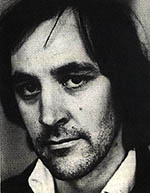 The Beatles arrived at EMI Studio Two sometime after the usual 7 pm on this day and Paul recorded some minor backing vocals as an overdub for George's song “Long Long Long.” The other duties of the day included producer Chris Thomas performing a piano overdub for the same song as well as working on creating both the stereo and mono mixes of John's “The Continuing Story Of Bungalow Bill.” John and George were occupied with contributing ideas for these mixes, and Paul didn't feel he was needed. In his book "The Lyrics," he explains: "We were mixing in Studio Two, which was really the dedicated Beatles studio at (EMI), and I was getting a bit fed up sitting around. Everyone had gone home, but we were still there at ten o-clock, eleven o'clock, midnight. There was no one else around except for a security sergeant, maybe somebody on the door...I wanted to do a let-it-all-hang-out song based on little more than a mantra. The term 'mantra' is not entirely beside the point, because I got the idea for this song when I was in India with Maharishi Mahesh Yogi earlier in the year." Therefore, Paul grabbed technical engineer Ken Townsend and brought him in to the vacant EMI Studio One to run the four-track tape machine while he tried his hand at recording “Why Don't We Do It In The Road?" The Beatles arrived at EMI Studio Two sometime after the usual 7 pm on this day and Paul recorded some minor backing vocals as an overdub for George's song “Long Long Long.” The other duties of the day included producer Chris Thomas performing a piano overdub for the same song as well as working on creating both the stereo and mono mixes of John's “The Continuing Story Of Bungalow Bill.” John and George were occupied with contributing ideas for these mixes, and Paul didn't feel he was needed. In his book "The Lyrics," he explains: "We were mixing in Studio Two, which was really the dedicated Beatles studio at (EMI), and I was getting a bit fed up sitting around. Everyone had gone home, but we were still there at ten o-clock, eleven o'clock, midnight. There was no one else around except for a security sergeant, maybe somebody on the door...I wanted to do a let-it-all-hang-out song based on little more than a mantra. The term 'mantra' is not entirely beside the point, because I got the idea for this song when I was in India with Maharishi Mahesh Yogi earlier in the year." Therefore, Paul grabbed technical engineer Ken Townsend and brought him in to the vacant EMI Studio One to run the four-track tape machine while he tried his hand at recording “Why Don't We Do It In The Road?"
 "My one-minute-40-seconds claim to fame," Ken Townsend exclaims about the one and only time he was used as a balance engineer on a Beatles recording. Since no true producer was present, and Paul was in full control of the proceedings, one can easily signify McCartney as the producer on this track. In the book that accompanies the Super Deluxe "White Album" box set, Ken Townsend describes the events of this session. "Paul said, 'I've got this idea for a song. Can we give it a try?' (Studio One) was laid out for an orchestra for the following day. I placed Paul on the left-hand side so I could see him through the window. That studio is a huge great barn - 22,000 cubic feet." "My one-minute-40-seconds claim to fame," Ken Townsend exclaims about the one and only time he was used as a balance engineer on a Beatles recording. Since no true producer was present, and Paul was in full control of the proceedings, one can easily signify McCartney as the producer on this track. In the book that accompanies the Super Deluxe "White Album" box set, Ken Townsend describes the events of this session. "Paul said, 'I've got this idea for a song. Can we give it a try?' (Studio One) was laid out for an orchestra for the following day. I placed Paul on the left-hand side so I could see him through the window. That studio is a huge great barn - 22,000 cubic feet."
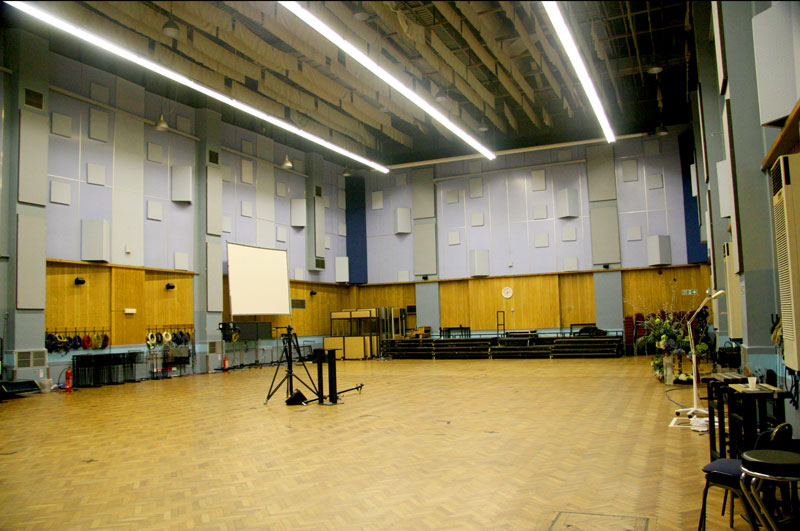 Paul didn't quite know how to present the song, but he nonetheless ran through five takes of a rhythm track, which consisted of him on acoustic guitar and vocals, each take beginning with Paul thumping out a beat on the sounding board of his guitar. After the first incomplete take, Paul said to Ken Townsend, "You look a bit worried," indicating the surprised reaction the engineer had because of the very wide dynamics and long reverberation caused by the size of EMI Studio One. The following four takes consisted of Paul starting out singing softly and then changing to a loud and rough voice later in the song. Paul didn't quite know how to present the song, but he nonetheless ran through five takes of a rhythm track, which consisted of him on acoustic guitar and vocals, each take beginning with Paul thumping out a beat on the sounding board of his guitar. After the first incomplete take, Paul said to Ken Townsend, "You look a bit worried," indicating the surprised reaction the engineer had because of the very wide dynamics and long reverberation caused by the size of EMI Studio One. The following four takes consisted of Paul starting out singing softly and then changing to a loud and rough voice later in the song.
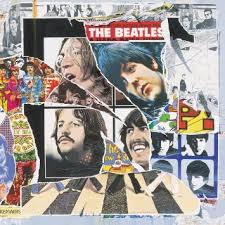 "Take four," which was eventually included on the compilation album "Anthology 3," shows Paul singing four verses, the only take in which he had done this. The first verse was sung softly, the second loud, the third mostly soft but ending loud, and the fourth soft. The lyrics in the fourth verse actually alter slightly from the previous verses to "people won't be watching us." He then begins a fifth verse sung loudly but then cuts it short, saying to Ken Townsend, "Well, well, well, what do you think of all that? Do you think that I could do it better? I think I could do it a bit better actually. See, I wanna just try and do one quiet verse, one loud verse; and then that's it, really." "Take four," which was eventually included on the compilation album "Anthology 3," shows Paul singing four verses, the only take in which he had done this. The first verse was sung softly, the second loud, the third mostly soft but ending loud, and the fourth soft. The lyrics in the fourth verse actually alter slightly from the previous verses to "people won't be watching us." He then begins a fifth verse sung loudly but then cuts it short, saying to Ken Townsend, "Well, well, well, what do you think of all that? Do you think that I could do it better? I think I could do it a bit better actually. See, I wanna just try and do one quiet verse, one loud verse; and then that's it, really."
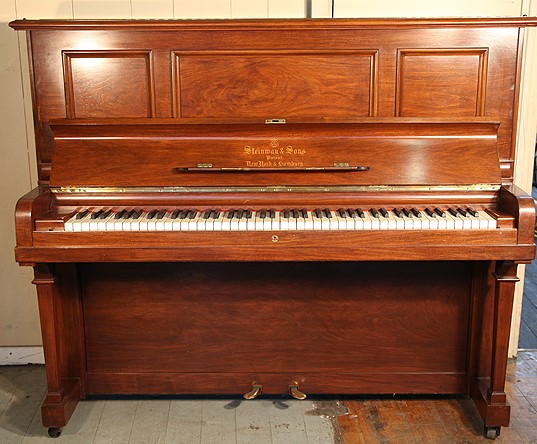 Paul did one final take, "take five," which was eventually included on the Super Deluxe "White Album" 50th Anniversary box set. He repeated the verse three times on this take, the first verse in a soft voice, the second in a rough voice, and the third being a mixture of the two. Paul was apparently satisfied with what he had done, stating at the end, "Is that OK? 'Cause I won't come listen to that one. However, I will move this microphone nearer the piano, should I?" And with this, he overdubbed a piano onto "take five" before heading home for the day at 5:30 am the following morning. Paul did one final take, "take five," which was eventually included on the Super Deluxe "White Album" 50th Anniversary box set. He repeated the verse three times on this take, the first verse in a soft voice, the second in a rough voice, and the third being a mixture of the two. Paul was apparently satisfied with what he had done, stating at the end, "Is that OK? 'Cause I won't come listen to that one. However, I will move this microphone nearer the piano, should I?" And with this, he overdubbed a piano onto "take five" before heading home for the day at 5:30 am the following morning.
The following day (that is, later that day), October 10th, 1968, The Beatles once again entered EMI Studio Two around 7 pm for the arduous task of recording the orchestral scores for George's song “Piggies” and John's song “Glass Onion.” Duties also included creating the mono and stereo mixes of “Glass Onion” as well as stereo mixes for both “Rocky Raccoon” and “Long Long Long.”
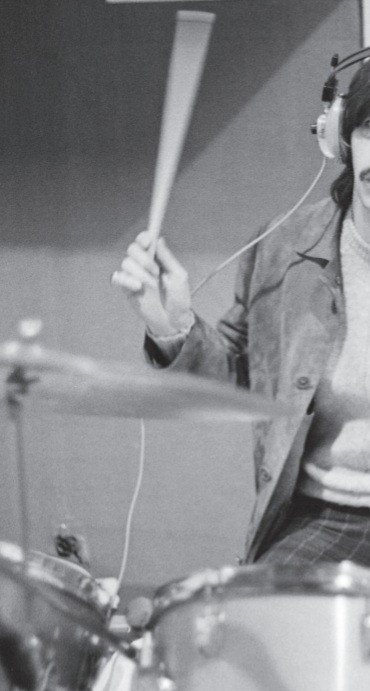 Once again, Paul didn't think his input was needed, so at some point he commandeered Ken Townsend, as well as Ringo, to go finish off “Why Don't We Do It In The Road?” This time, however, they went into the vacant EMI Studio Three (maybe because that was where Ringo's drums happened to be located) to layer various overdubs onto the song. With Paul once again calling the shots, Ringo added drums while Paul overdubbed handclaps and a bass guitar onto "take five." Paul also sang a new lead vocal, which wiped the majority of the original vocal and acoustic guitar from the previous day. The only traces of the orignal vocal are found in the double-tracking on the first line of the second verse, and then the segment that encompasses the final line of the second verse and the first line of the third verse. Once again, Paul didn't think his input was needed, so at some point he commandeered Ken Townsend, as well as Ringo, to go finish off “Why Don't We Do It In The Road?” This time, however, they went into the vacant EMI Studio Three (maybe because that was where Ringo's drums happened to be located) to layer various overdubs onto the song. With Paul once again calling the shots, Ringo added drums while Paul overdubbed handclaps and a bass guitar onto "take five." Paul also sang a new lead vocal, which wiped the majority of the original vocal and acoustic guitar from the previous day. The only traces of the orignal vocal are found in the double-tracking on the first line of the second verse, and then the segment that encompasses the final line of the second verse and the first line of the third verse.
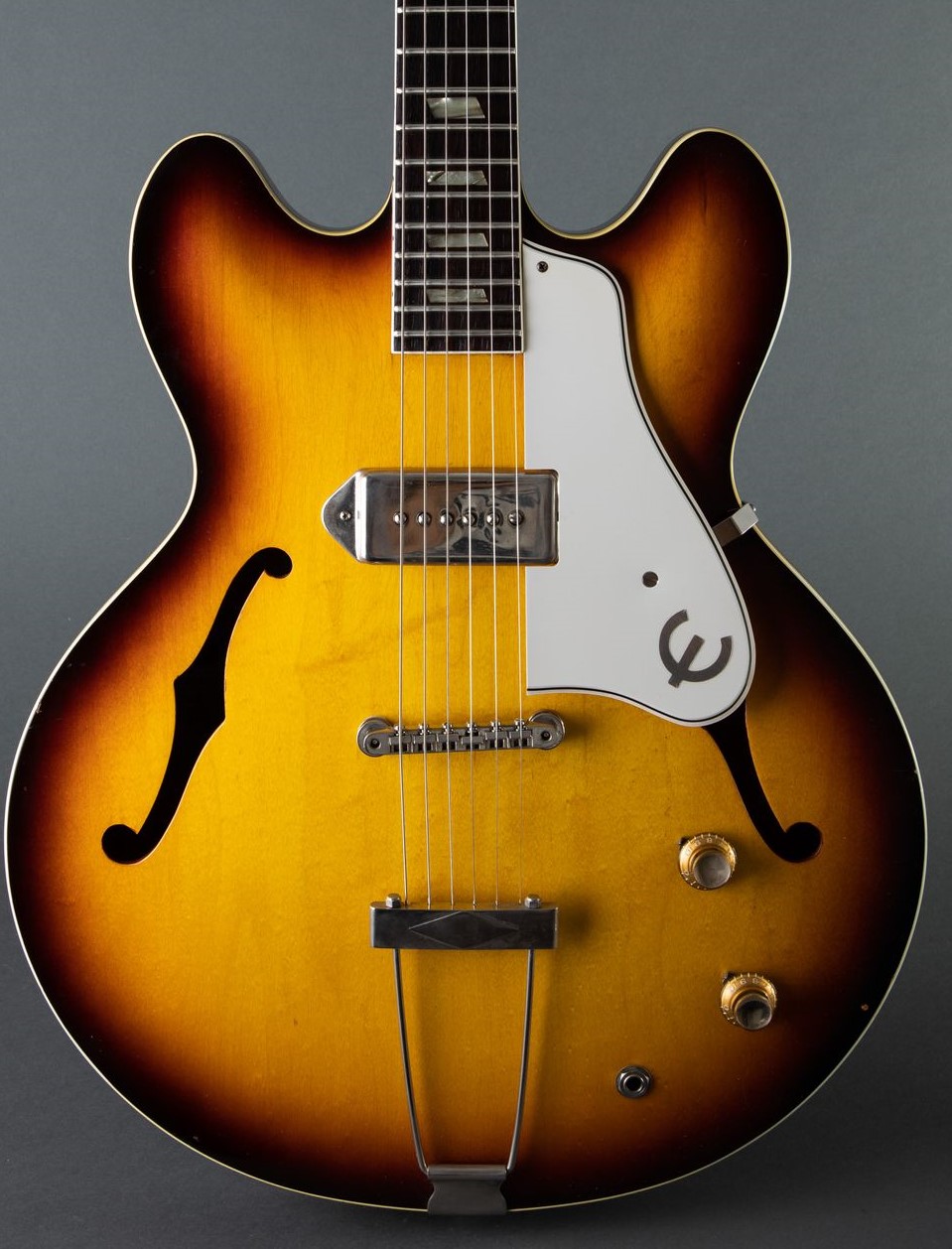 Since all four tracks of the four-track tape were now filled and Paul had one more idea for an overdub, a reduction mix was made, which combined tracks one and four, this becoming track one of what was now considered "take six." The open track was then filled with Paul on electric guitar, this completing the song. As the sun was rising at 7:15 am the following morning, both sessions of the day were complete. Since all four tracks of the four-track tape were now filled and Paul had one more idea for an overdub, a reduction mix was made, which combined tracks one and four, this becoming track one of what was now considered "take six." The open track was then filled with Paul on electric guitar, this completing the song. As the sun was rising at 7:15 am the following morning, both sessions of the day were complete.
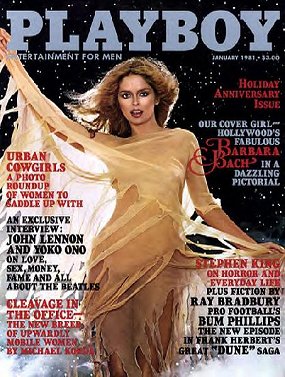 But how did John and George feel about this song being recorded in their absence? John related in his 1980 Playboy Magazine interview the following: “He even recorded it by himself in another room. That's how it was getting in those days. We came in and he'd made the whole record; him drumming, him playing the piano, him singing. But he couldn't - he couldn't - maybe he couldn't make the break from The Beatles. I don't know what it was, you know. I enjoyed the track. Still, I can't speak for George, but I was always hurt when Paul would knock something off without involving us. But that's just the way it was then.” But how did John and George feel about this song being recorded in their absence? John related in his 1980 Playboy Magazine interview the following: “He even recorded it by himself in another room. That's how it was getting in those days. We came in and he'd made the whole record; him drumming, him playing the piano, him singing. But he couldn't - he couldn't - maybe he couldn't make the break from The Beatles. I don't know what it was, you know. I enjoyed the track. Still, I can't speak for George, but I was always hurt when Paul would knock something off without involving us. But that's just the way it was then.”
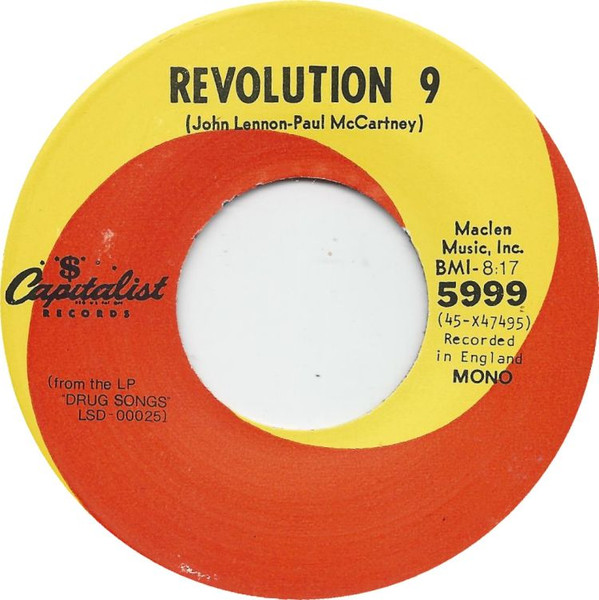 In response to Yoko's claim that nobody had hurt John more than Paul did, McCartney strove to set the record straight when interviewed by Hunter Davies in 1981. “There's only one incident I can think of that John has mentioned publicly. It was when I went off with Ringo and did 'Why Don't We Do It In The Road.' It wasn't a deliberate thing. John and George were tied up finishing something and me and Ringo were free, just hanging around, so I said to Ringo, 'Let's go and do this'...Anyway, he did the same with 'Revolution 9.' He went off and made that without me. No one ever says that. 'John is the nice guy and I'm the bastard.' It gets repeated all the time.” In response to Yoko's claim that nobody had hurt John more than Paul did, McCartney strove to set the record straight when interviewed by Hunter Davies in 1981. “There's only one incident I can think of that John has mentioned publicly. It was when I went off with Ringo and did 'Why Don't We Do It In The Road.' It wasn't a deliberate thing. John and George were tied up finishing something and me and Ringo were free, just hanging around, so I said to Ringo, 'Let's go and do this'...Anyway, he did the same with 'Revolution 9.' He went off and made that without me. No one ever says that. 'John is the nice guy and I'm the bastard.' It gets repeated all the time.”
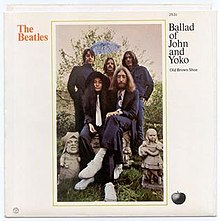 According to Ringo, jealousy among the other Beatles didn't usually get blown out of proportion concerning these things. “'The Ballad Of John And Yoko' only had Paul (of the other Beatles) on it but that was OK,” stated Ringo in the “Anthology” book. “'Why Don't We Do It In The Road?' was just Paul and me, and it went out as a Beatle track too. We had no problems with that.” According to Ringo, jealousy among the other Beatles didn't usually get blown out of proportion concerning these things. “'The Ballad Of John And Yoko' only had Paul (of the other Beatles) on it but that was OK,” stated Ringo in the “Anthology” book. “'Why Don't We Do It In The Road?' was just Paul and me, and it went out as a Beatle track too. We had no problems with that.”
After all was said and done, however, John still made it public that he thought “Why Don't We Do It In The Road?” was “one of his best.” Paul thought so too: “It's a great track, isn't it? Good vocal, though I say it myself."
 It should be noted here that many sources claim that Paul initially played drums on the song and Ringo came in the following day and contributed drums as well. This apparently is a misunderstanding. As stipulated above, John assumed that Paul recorded the song entirely himself and is quoted as saying that it was "him drumming" but, as Lennon himself admits, he wasn't present when the song was recorded. Both Paul and Ringo are on record saying that the drums were performed by Ringo, and they obviously would know since they were there. Paul's acoustic guitar thumping at the beginning of the song may also have led authors to assume that Paul was playing drums. Mark Lewisohn's authoritative book "The Beatles Recording Sessions" also cites Ringo as being the sole drummer on the song, Mark being treated to listening to all of the takes of the song in preparation for writing this book. It should be noted here that many sources claim that Paul initially played drums on the song and Ringo came in the following day and contributed drums as well. This apparently is a misunderstanding. As stipulated above, John assumed that Paul recorded the song entirely himself and is quoted as saying that it was "him drumming" but, as Lennon himself admits, he wasn't present when the song was recorded. Both Paul and Ringo are on record saying that the drums were performed by Ringo, and they obviously would know since they were there. Paul's acoustic guitar thumping at the beginning of the song may also have led authors to assume that Paul was playing drums. Mark Lewisohn's authoritative book "The Beatles Recording Sessions" also cites Ringo as being the sole drummer on the song, Mark being treated to listening to all of the takes of the song in preparation for writing this book.
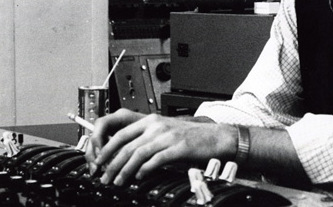 Both the mono and stereo mixes of the song were made during a marathon 24-hour control room session on October 16th and 17th, 1968, from 5 pm to 5 pm. Only one attempt was needed for each mix to get them to the desired state, these mixes created by George Martin and engineers Ken Scott and John Smith with oversight from Paul and John. The one noticeable difference between the mixes is that the handclaps are missing in the introduction on the mono mix. Both the mono and stereo mixes of the song were made during a marathon 24-hour control room session on October 16th and 17th, 1968, from 5 pm to 5 pm. Only one attempt was needed for each mix to get them to the desired state, these mixes created by George Martin and engineers Ken Scott and John Smith with oversight from Paul and John. The one noticeable difference between the mixes is that the handclaps are missing in the introduction on the mono mix.
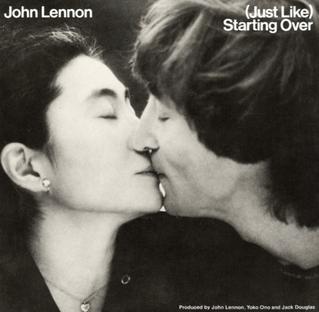 As an interesting and humorous sidenote, on August 9th, 1980, while John was recording his song "(Just Like) Starting Over" at The Hit Factory in New York City, instead of singing "Why don't we take off alone?" as the first line of the bridge, John sings "Why don't we do it in the road?" This version, of course, never got officially released.. As an interesting and humorous sidenote, on August 9th, 1980, while John was recording his song "(Just Like) Starting Over" at The Hit Factory in New York City, instead of singing "Why don't we take off alone?" as the first line of the bridge, John sings "Why don't we do it in the road?" This version, of course, never got officially released..
 Sometime in 1996, George Martin and engineer Geoff Emerick returned to the master tape of the song to create the mix of "take four" that is heard on “Anthology 3” as described above. George Martin, along with his son Giles Martin, brought out the master tape of the song once again sometime between 2004 and 2006 to include the introductory drums and handclaps as added elements in their newly created mix of the song “Lady Madonna” as included on the compilation album “Love." Sometime in 1996, George Martin and engineer Geoff Emerick returned to the master tape of the song to create the mix of "take four" that is heard on “Anthology 3” as described above. George Martin, along with his son Giles Martin, brought out the master tape of the song once again sometime between 2004 and 2006 to include the introductory drums and handclaps as added elements in their newly created mix of the song “Lady Madonna” as included on the compilation album “Love."
 Giles Martin and engineer Sam Okell also pulled out the master tapes sometime in 2018 to create a vibrant new mix of the song in preparation for the various "White Album" 50th Anniversary releases. They also created a stereo mix of "take five," complete with Paul's original lead vocal and acoustic guitar. Giles Martin and engineer Sam Okell also pulled out the master tapes sometime in 2018 to create a vibrant new mix of the song in preparation for the various "White Album" 50th Anniversary releases. They also created a stereo mix of "take five," complete with Paul's original lead vocal and acoustic guitar.
Song Structure and Style
The song's structure consists of a typical 12-bar blues pattern and is only three verses long (or aaa) with a simple introduction thrown in.
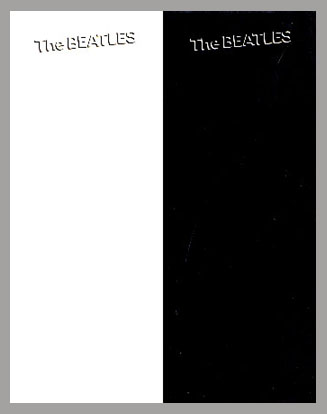 This introduction is four measures long and consists only of percussive elements, the only purposes of this intro being to set the tempo for the song and to allow Paul's vocal to have a springboard in the fourth measure. The first measure consists mostly of Paul thumping a 4/4 beat on the sounding board of his acoustic guitar, accentuated by a little snare work from Ringo at the end. The second measure is taken up only by Paul's guitar thumping and his overdubbed handclaps (stereo mix only). Ringo comes back in with a snare and tom tom fill in the third measure, all of this coming to a halt on the downbeat of the fourth measure which creates a 'Beatles break' for Paul to begin his vocalization. This introduction is four measures long and consists only of percussive elements, the only purposes of this intro being to set the tempo for the song and to allow Paul's vocal to have a springboard in the fourth measure. The first measure consists mostly of Paul thumping a 4/4 beat on the sounding board of his acoustic guitar, accentuated by a little snare work from Ringo at the end. The second measure is taken up only by Paul's guitar thumping and his overdubbed handclaps (stereo mix only). Ringo comes back in with a snare and tom tom fill in the third measure, all of this coming to a halt on the downbeat of the fourth measure which creates a 'Beatles break' for Paul to begin his vocalization.
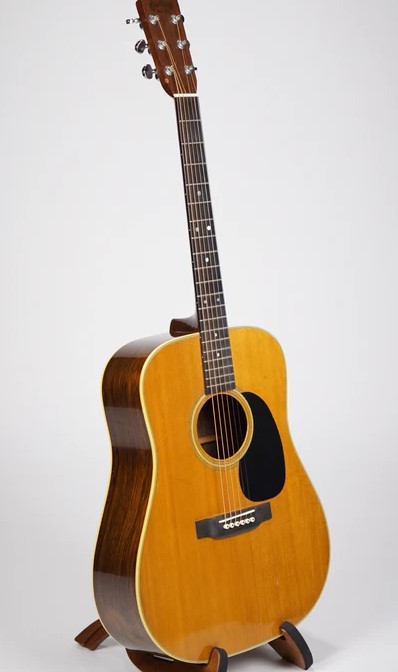 The first twelve-measure verse then begins, which consists of Paul on vocals, his Martin acoustic guitar, piano and bass as well as a subdued drum beat from Ringo. In fact, Ringo's performance on this song sounds as if it was played with brushes, his riding cymbal beat only slightly detected throughout. Paul adds little extraneous vocal sounds in between his lyric lines in measures three and five, other very slight vocalizations also being detected in other measures as well. The first twelve-measure verse then begins, which consists of Paul on vocals, his Martin acoustic guitar, piano and bass as well as a subdued drum beat from Ringo. In fact, Ringo's performance on this song sounds as if it was played with brushes, his riding cymbal beat only slightly detected throughout. Paul adds little extraneous vocal sounds in between his lyric lines in measures three and five, other very slight vocalizations also being detected in other measures as well.
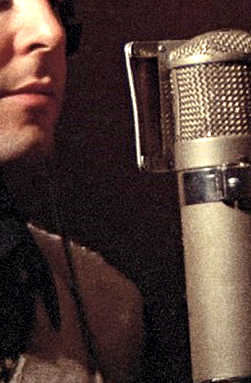 Paul's overdubbed electric rhythm guitar finally arrives in the seventh measure, which fits in nicely as Paul plays it high up on the neck. However, with the chord changes that start in the ninth measure, his positioning on the neck lowers which ends up sounding slightly out-of-tune by the time the eleventh measure kicks in. The eleventh measure includes a snare drum break while the twelfth measure includes a repeat of the 'Beatles break,' allowing Paul to begin singing the second verse, this being the first occasion in the song that Paul's vocal overdubbing is detected. Ringo performs another snare drum fill here as well, as a segue into the verse that follows. Paul's overdubbed electric rhythm guitar finally arrives in the seventh measure, which fits in nicely as Paul plays it high up on the neck. However, with the chord changes that start in the ninth measure, his positioning on the neck lowers which ends up sounding slightly out-of-tune by the time the eleventh measure kicks in. The eleventh measure includes a snare drum break while the twelfth measure includes a repeat of the 'Beatles break,' allowing Paul to begin singing the second verse, this being the first occasion in the song that Paul's vocal overdubbing is detected. Ringo performs another snare drum fill here as well, as a segue into the verse that follows.
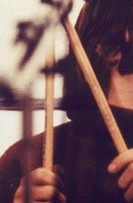 The second verse continues the same instrumentation throughout, the electric guitar unfortunately starting out in the lower positioning and still sounding somewhat out-of-tune. One can detect another instance of Paul's overdubbed vocals in measure four, possibly covering over what he felt was an unsatisfactory vocal performance from the rhythm track. Ringo adds snare drum fills in measures nine, ten and twelve this time around. The twelfth measure is again a 'Beatles break' with Paul rising to a heavy, soulful falsetto reading of the song's title as a transition to the third verse that follows. The second verse continues the same instrumentation throughout, the electric guitar unfortunately starting out in the lower positioning and still sounding somewhat out-of-tune. One can detect another instance of Paul's overdubbed vocals in measure four, possibly covering over what he felt was an unsatisfactory vocal performance from the rhythm track. Ringo adds snare drum fills in measures nine, ten and twelve this time around. The twelfth measure is again a 'Beatles break' with Paul rising to a heavy, soulful falsetto reading of the song's title as a transition to the third verse that follows.
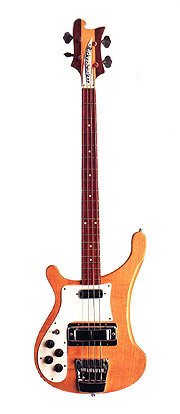 This third verse, which is only eleven measures this time around, becomes the emotional climax of the song due to Paul's heavy-handed vocal work. He inadvertently adds extra syllables to the main phrase of the song repeatedly, such as “road-ah” in measure three, “da-do it, do it” in measure four, and “i-ee-it in the ro-ooh-oad” in measures five and six. Paul's electric guitar suitably begins the verse in the higher in-key positioning but then unfortunately moves back down again by the seventh measure. Paul's bass begins to show off a little in the second and third measures just to add a little ingenuity and variation. This time the 'Beatles break' happens in the tenth measure so that Paul can end the song with his final spirited plea to “do it in the road” before the final staccato chord pounds on the downbeat of the eleventh measure with a sturdy open hi-hat crash ringing the song out. This third verse, which is only eleven measures this time around, becomes the emotional climax of the song due to Paul's heavy-handed vocal work. He inadvertently adds extra syllables to the main phrase of the song repeatedly, such as “road-ah” in measure three, “da-do it, do it” in measure four, and “i-ee-it in the ro-ooh-oad” in measures five and six. Paul's electric guitar suitably begins the verse in the higher in-key positioning but then unfortunately moves back down again by the seventh measure. Paul's bass begins to show off a little in the second and third measures just to add a little ingenuity and variation. This time the 'Beatles break' happens in the tenth measure so that Paul can end the song with his final spirited plea to “do it in the road” before the final staccato chord pounds on the downbeat of the eleventh measure with a sturdy open hi-hat crash ringing the song out.
American Releases
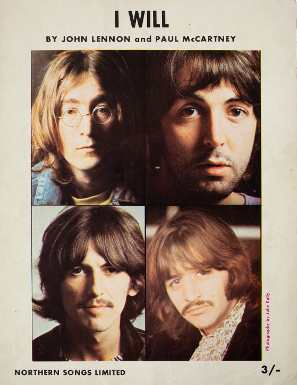 November 25th, 1968, was the US release date for their double-album "The Beatles," aka the "White Album." "Why Don't We Do It In The Road?" was included on side two, nestled between Ringo's country-tinged "Don't Pass Me By" and Paul's crooner "I Will," once again demonstrating the variety of musical genres The Beatles were capable of. The album first appeared on compact disc on August 24th, 1987, then as a 30th Anniversary edition on November 23rd, 1998, then as a remastered CD on September 9th, 2009. It got its first mono vinyl release in America on November 9th, 2014, while a brand new stereo mix was released on vinyl on November 9th, 2018. November 25th, 1968, was the US release date for their double-album "The Beatles," aka the "White Album." "Why Don't We Do It In The Road?" was included on side two, nestled between Ringo's country-tinged "Don't Pass Me By" and Paul's crooner "I Will," once again demonstrating the variety of musical genres The Beatles were capable of. The album first appeared on compact disc on August 24th, 1987, then as a 30th Anniversary edition on November 23rd, 1998, then as a remastered CD on September 9th, 2009. It got its first mono vinyl release in America on November 9th, 2014, while a brand new stereo mix was released on vinyl on November 9th, 2018.
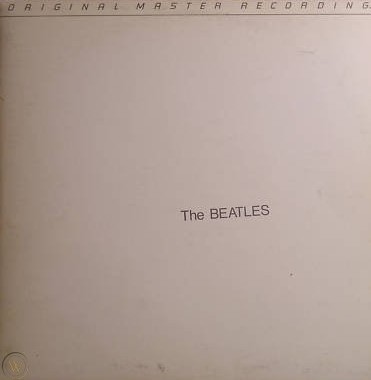 An interesting US vinyl edition of the “White Album” was released on January 7th, 1982, this being manufactured by Mobile Fidelity Sound Lab in Chatsworth, California as part of their "Original Master Recording" series. Their practice was to prepare a new master utilizing half-speed mastering technology from the original master tapes, in this case using the leased sub-master from Capitol Records. This release, which sounded superior to all previous British and American pressings, was packaged in a non-embossed unnumbered cover that did not include the usual poster/lyric sheet or individual Beatles portraits as contained in standard releases. This nonetheless excellent edition of the album was only available for a short time and is quite collectible today. An interesting US vinyl edition of the “White Album” was released on January 7th, 1982, this being manufactured by Mobile Fidelity Sound Lab in Chatsworth, California as part of their "Original Master Recording" series. Their practice was to prepare a new master utilizing half-speed mastering technology from the original master tapes, in this case using the leased sub-master from Capitol Records. This release, which sounded superior to all previous British and American pressings, was packaged in a non-embossed unnumbered cover that did not include the usual poster/lyric sheet or individual Beatles portraits as contained in standard releases. This nonetheless excellent edition of the album was only available for a short time and is quite collectible today.
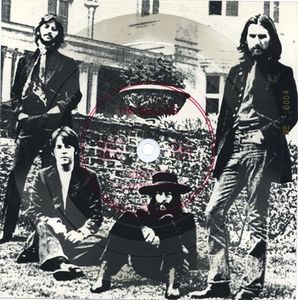 Sometime in 1982, a flexi-disc that featured “Rocky Raccoon” and “Why Don't We Do It In The Road?” was released as a promotional tool by Capitol/Evatone, these discs being given away at either “Musicland,” “Discount” or “Sam Goody” record stores whenever a Beatles album was purchased. This flexi-disc was printed on clear vinyl and adhered to the picture of The Beatles as found on the back cover of the “Hey Jude” album. Sometime in 1982, a flexi-disc that featured “Rocky Raccoon” and “Why Don't We Do It In The Road?” was released as a promotional tool by Capitol/Evatone, these discs being given away at either “Musicland,” “Discount” or “Sam Goody” record stores whenever a Beatles album was purchased. This flexi-disc was printed on clear vinyl and adhered to the picture of The Beatles as found on the back cover of the “Hey Jude” album.
The above mentioned compilation album “Anthology 3” was released on October 28th, 1996, "take four" of Paul's rhythm track being included therein.
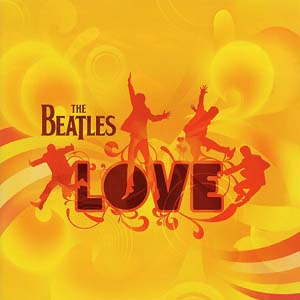 Elements heard in the introduction of “Why Don't We Do It In The Road?” were included in the mash-up track of “Lady Madonna” as heard on the album “Love,” which was released on November 20th, 2006. Elements heard in the introduction of “Why Don't We Do It In The Road?” were included in the mash-up track of “Lady Madonna” as heard on the album “Love,” which was released on November 20th, 2006.
On September 9th, 2009, American audiences first heard the mono mix of the song as contained in the CD box set “The Beatles In Mono,” the entire mono “White Album” being contained therein. The vinyl edition of this box set was first released on September 9th, 2014.
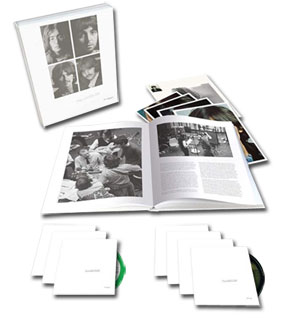 Various editions of the "White Album" were released on November 9th, 2018 to commemorate the 50th Anniversary of its original release. The "Deluxe" edition, which was made available in a 3CD set and a limited edition 180-gram 4LP vinyl set, contained the newly created Giles Martin mix of the "White Album," including "Why Don't We Do It In The Road?" The "Super Deluxe" 6CD + 1Blu-ray edition also contains "take five" of Paul's original rhythm track, complete with his original vocals and acoustic guitar. Various editions of the "White Album" were released on November 9th, 2018 to commemorate the 50th Anniversary of its original release. The "Deluxe" edition, which was made available in a 3CD set and a limited edition 180-gram 4LP vinyl set, contained the newly created Giles Martin mix of the "White Album," including "Why Don't We Do It In The Road?" The "Super Deluxe" 6CD + 1Blu-ray edition also contains "take five" of Paul's original rhythm track, complete with his original vocals and acoustic guitar.
Live Performances
The Beatles never performed the song live, and neither has Paul in any of his extensive solo tours. However, since the lyrics to the song were contained in his 2001 book “Blackbird Singing,” Paul has done readings from the book in front of audiences as a promotion for its release. Humorously, Paul chose to do readings of “Why Don't We Do It In The Road?” to enthusiastic audience responses.
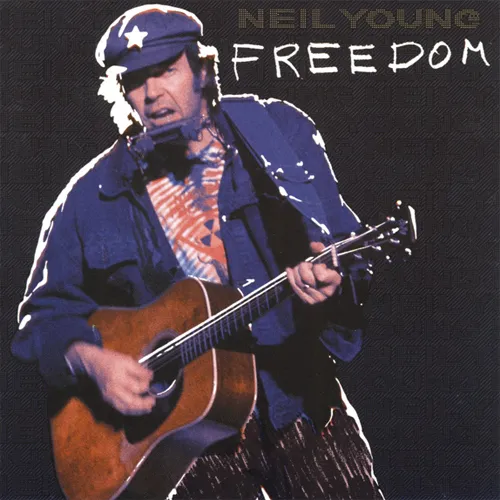 Two occasions that Paul did perform the song were on October 8th and October 9th, 2016, during his Desert Trip in Indio, California. Neil Young came on stage, and together they performed "Why Don't We Do It In The Road?" as well as the medley "A Day In The Life / Give Peace A Chance." Two occasions that Paul did perform the song were on October 8th and October 9th, 2016, during his Desert Trip in Indio, California. Neil Young came on stage, and together they performed "Why Don't We Do It In The Road?" as well as the medley "A Day In The Life / Give Peace A Chance."
Conclusion
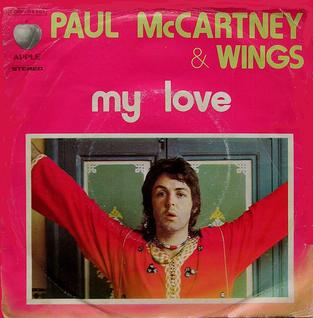 Will Paul McCartney ever live down his reputation as a composer of love ballads? While it's true that he is known for writing his fair share in this genre, noteworthy examples being "And I Love Her," "Michelle," "Here, There And Everywhere," "My Love" and the ever immortal "Yesterday," he seems to have gone out of his way to prove himself prolific across the board. Will Paul McCartney ever live down his reputation as a composer of love ballads? While it's true that he is known for writing his fair share in this genre, noteworthy examples being "And I Love Her," "Michelle," "Here, There And Everywhere," "My Love" and the ever immortal "Yesterday," he seems to have gone out of his way to prove himself prolific across the board.
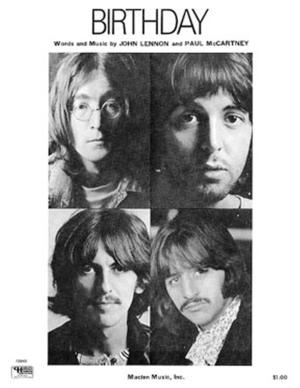 Never can this be displayed more than on the “White Album,” where he even out-rocks his self proclaimed rocker partner John Lennon. It's 'crooner Paul,' not John, that we hear belting out “Back In The U.S.S.R.,” “Birthday” and the blistering “Helter Skelter.” And as if to push the envelope even further, on this album it was the 'cute Beatle' screaming about not being able to have sex outdoors. Never can this be displayed more than on the “White Album,” where he even out-rocks his self proclaimed rocker partner John Lennon. It's 'crooner Paul,' not John, that we hear belting out “Back In The U.S.S.R.,” “Birthday” and the blistering “Helter Skelter.” And as if to push the envelope even further, on this album it was the 'cute Beatle' screaming about not being able to have sex outdoors.
Still, with Sir Paul McCartney probably branded as the most popular balladeer of the rock 'n' roll era, I don't think it's a moniker he should be too upset about. I know I wouldn't be.
Song Summary
"Why Don't We Do It In The Road?"
Written by: John Lennon / Paul McCartney
- Song Written: February - March, 1968
- Song Recorded: October 9, 1968
- First US Release Date: November 25, 1968
- First US Album Release: Apple #SWBO-101 “The Beatles”
- US Single Release: Capitol/Evatone #420828cs
- Highest Chart Position: n/a
- British Album Release: Apple #PCS 7067-7068 “The Beatles”
- Length: 1:42
- Key: D major
- Producer: Paul McCartney
- Engineer: Ken Townsend
Instrumentation (most likely):
- Paul McCartney - Lead Vocals, Acoustic Guitar (1967 Martin D-28), Piano (1905 Steinway Vertegrand), Bass (1964 Rickenbacker 4001 S), Electric Guitar (1962 Epiphone ES-230TD Casino), handclaps
- Ringo Starr - Drums (1964 Ludwig Super Classic Black Oyster Pearl)
Written and compiled by Dave Rybaczewski
|
IF YOU WOULD LIKE TO MAKE A DONATION TO KEEP THIS WEBSITE UP AND RUNNING, PLEASE CLICK BELOW!
Sign Up Below for our MONTHLY BEATLES TRIVIA QUIZ!
|